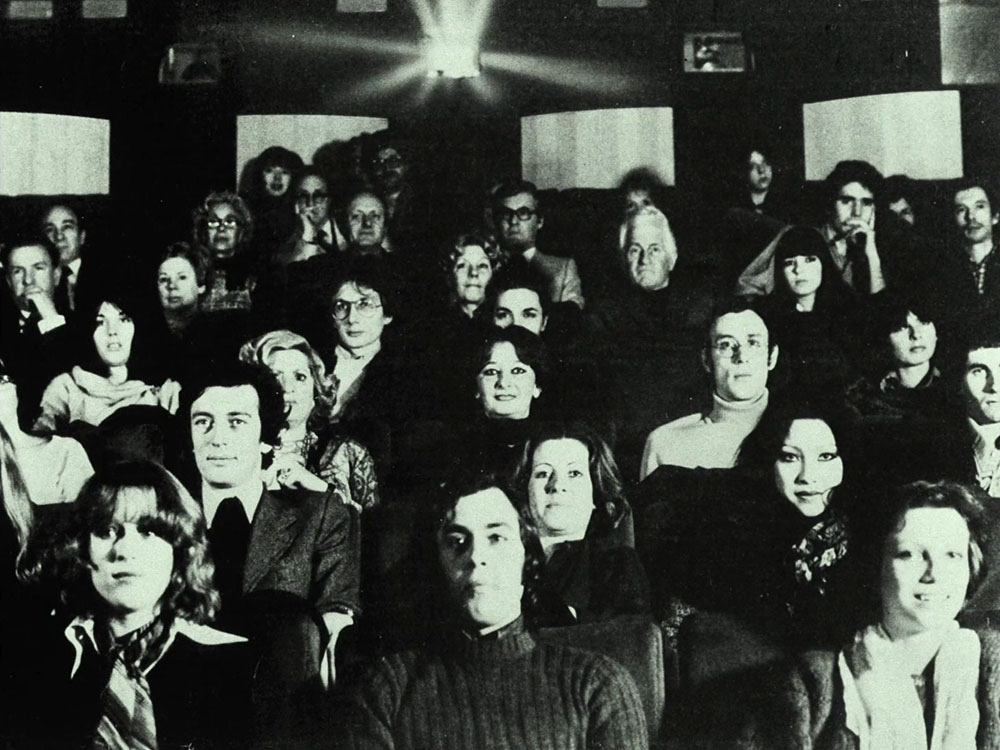The French theorist and filmmaker Guy Debord’s In girum imus nocte et consumimur igni (We go round and round in the night and are consumed by fire, 1979) presents a montage of archival photographs and footage: advertisements, maps, interiors, newsreels, urban streets, and scenes from popular films.
Decontextualized and seemingly innocuous images are swiftly reframed, via an accompanying voice-over narrated by Debord, to reveal something beyond themselves. We see a family lounging on a geometric sofa, and hear that the furniture symbolizes the imprisoning “grid” of capitalist abstraction. Deploying the Situationist strategy of détournement—the subversive reappropriation of preexisting materials—Debord wields critique after critique of image after image in a film that “disdains the image-scraps of which it is composed.”
In girum streams a surplus of specific scenes, still and moving, until particular images deflate and dissolve. Debord’s acerbic critiques—of cinema itself, of time under capitalism, of the misrepresentation of his own ideas—diminish in effect amidst the ideological deluge. He stages an adversarial relationship between image and sound, until each medium wears itself out and the two are reunited in their mutual dissolution.
Toward the beginning of In girum, Debord directly references his first film, Hurlements en faveur de Sade (1952). The earlier film alternates between black and white screens; when there is speech, the screen is white, and when there is silence, the screen is black. The punctual blank of this earlier film appears only intermittently in this later work. These “empty” images no longer function as voids, as they did in Hurlements, but as erasures, passages, even respites—like a syncopation pulsing through the film.
The influx of images, and Debord’s rigorously negative positioning of them, imbues these blanks with affective and conceptual resonance. Debord sketches the contour of an alternative only negatively: these are not negations of the image but images among others, not “empty” images but surfaces loaded with potential. These contrasting cinematic tactics—blank screens and image overload—bookend Debord’s cinematic career, with the former only, and finally, gaining traction through the latter.
Debord renews attention to the fundamental, material components of the mediums he engages. Sequences of plain black and white recall the elemental form to which the other images can be reduced and the palindromic structure of the title foregrounds letters as discrete units of language. He emphasizes the material components of these forms to remind us that it is of course society, not technology, that creates and sustains a world bound by capitalist abstraction. By returning to the blanks and the letters, we can see the absence of meaning—or the promise of beginning again. The film has no decisive “End,” only a text frame that reads “to be recommenced from the start.”
In girum imus nocte et consumimur igni screens this evening, November 14, at e-flux Screening Room as part of the series “If I Loved Life, I Wouldn’t Make Movies: Revisiting Situationist Film.”



